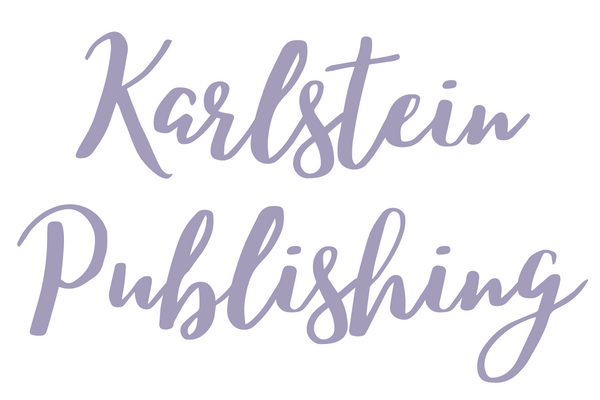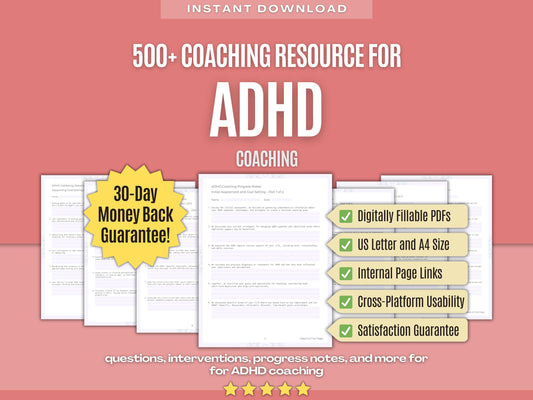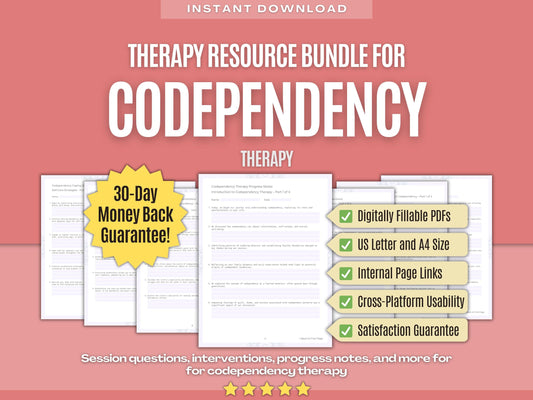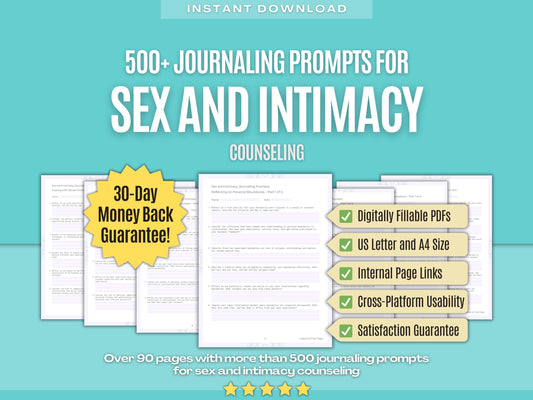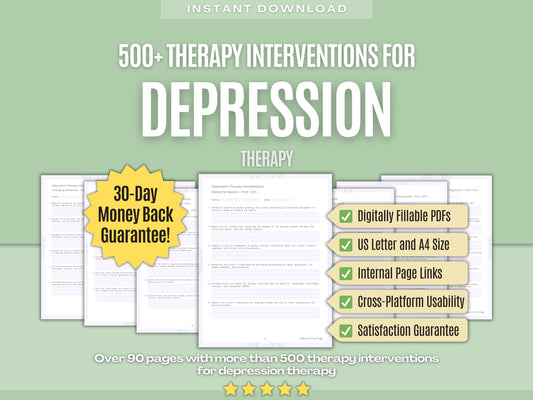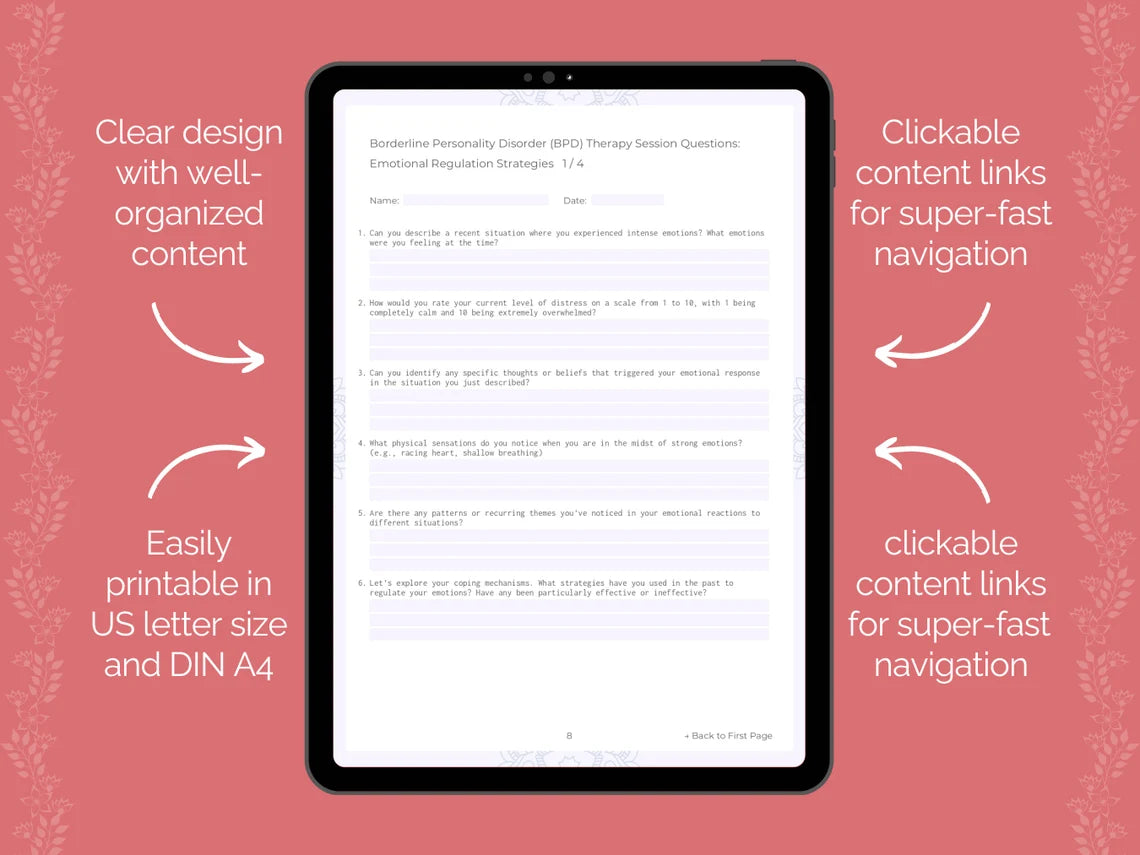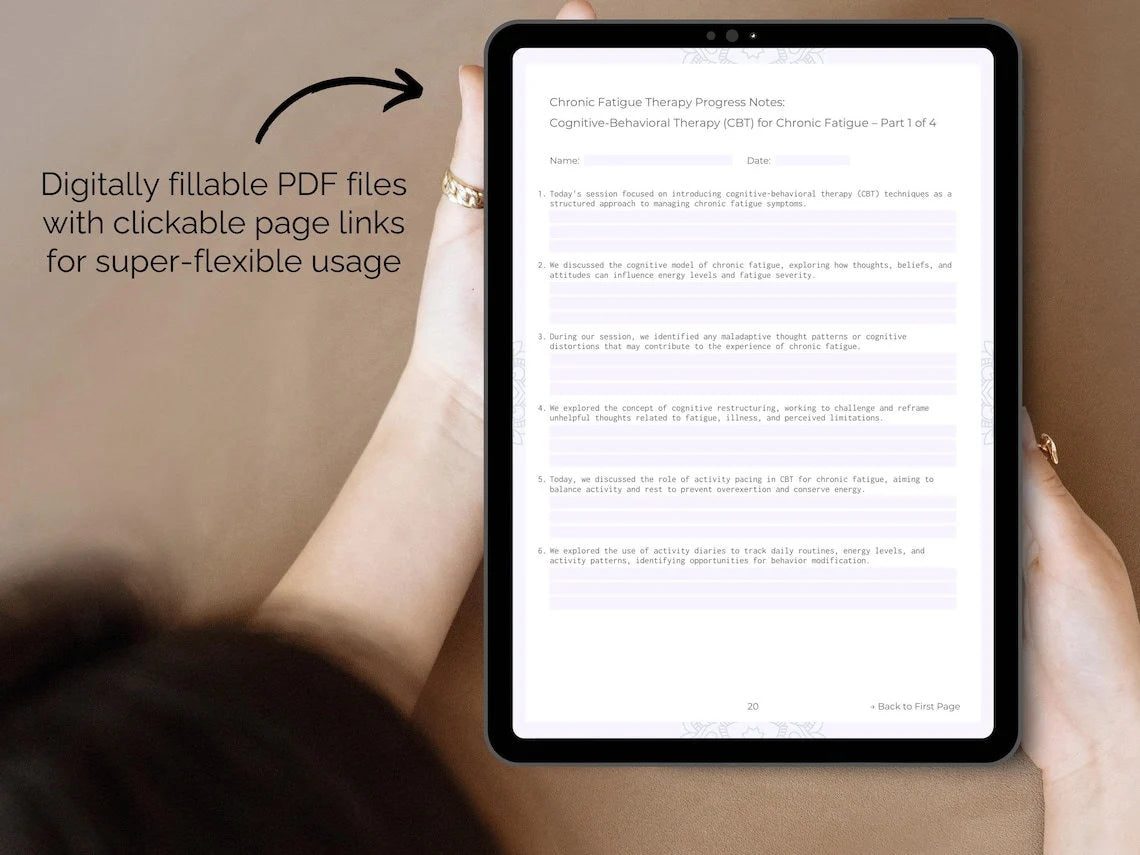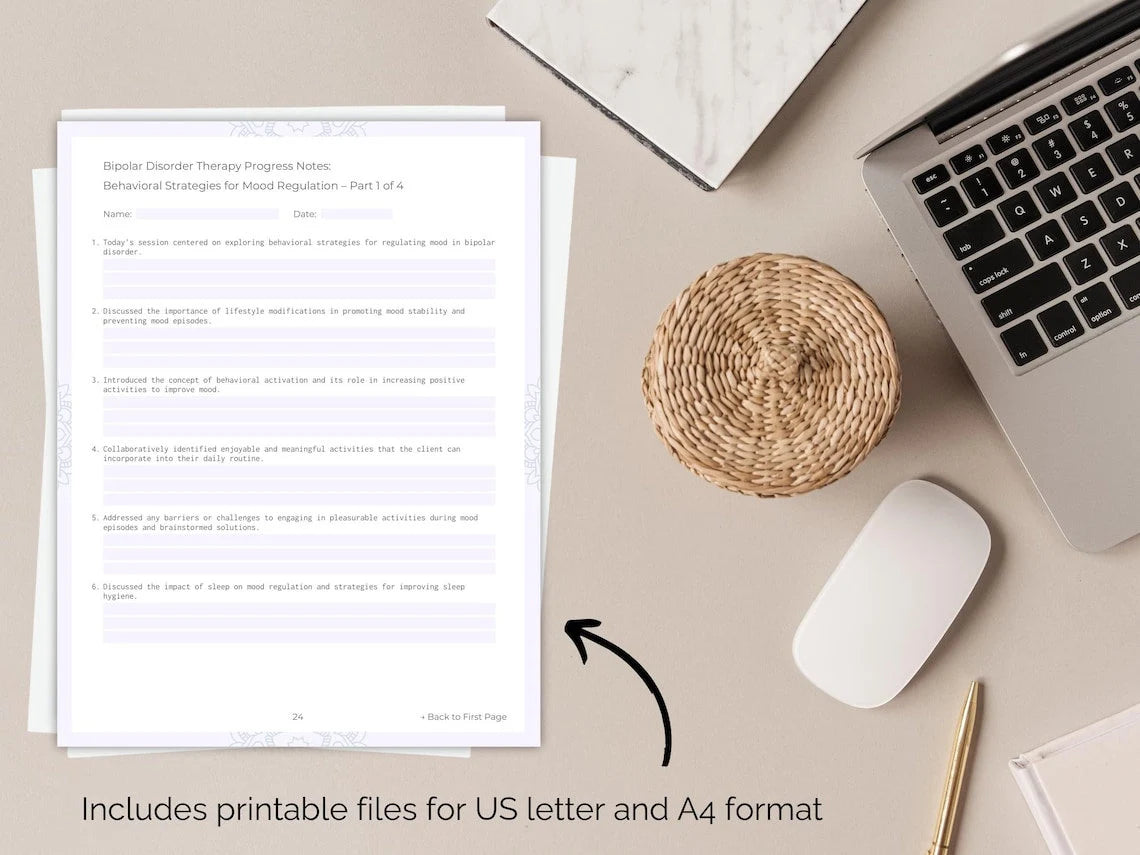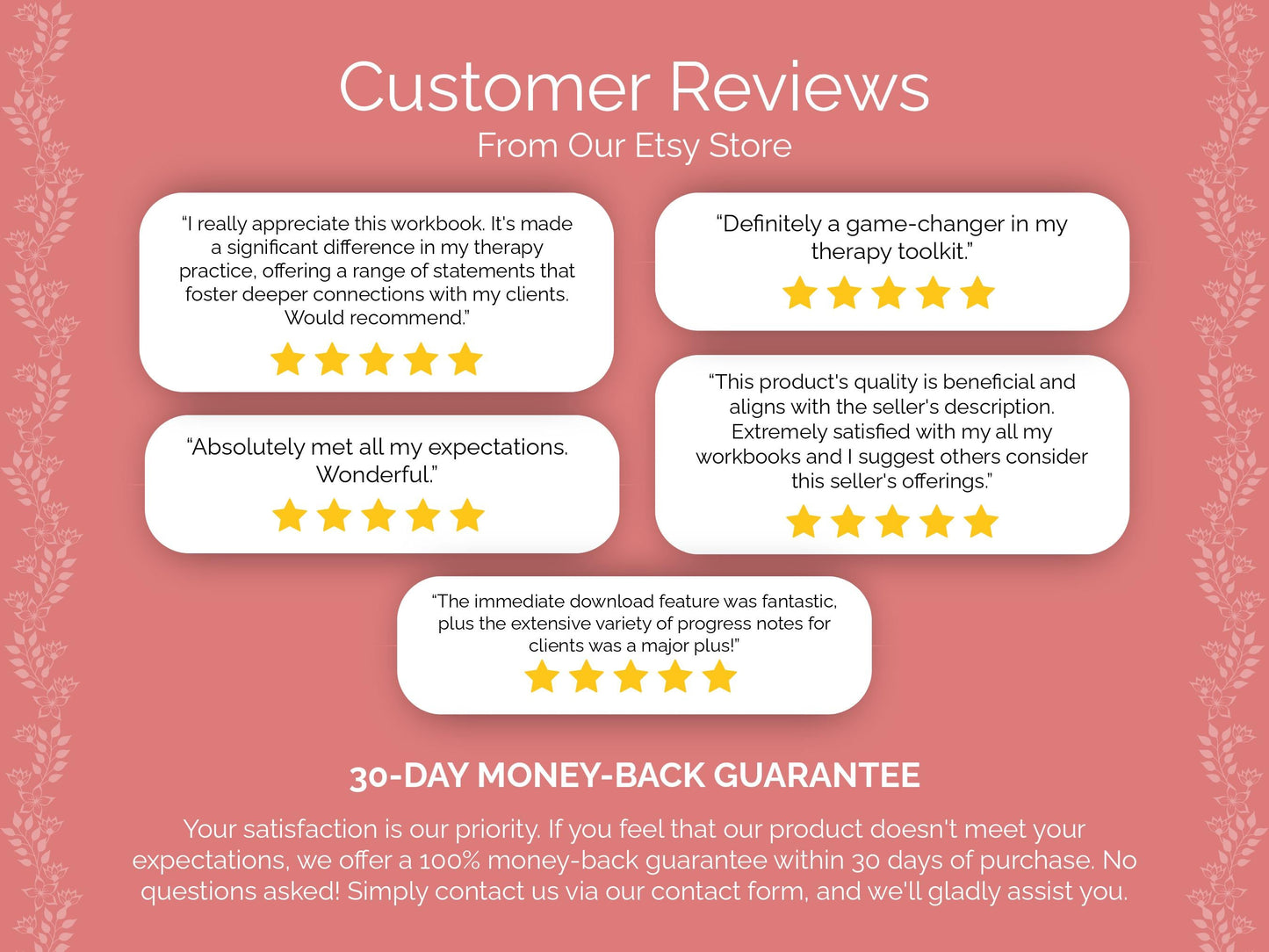Elevate Your Therapy and Guide Your Clients to Inner Healing with Our Burnout and Prevention Therapy Interventions! ✨
1. Starting Burnout Prevention Therapy
- Begin by establishing a collaborative and supportive therapeutic relationship, fostering trust and rapport with the client to create a safe space for exploration and growth.
- Explore the client's personal and professional background, including work environment, responsibilities, stressors, coping mechanisms, and support systems.
- Provide psychoeducation on the causes and risk factors of burnout, helping the client understand the various factors contributing to their distress.
- Assess the client's current self-care practices and coping strategies, identifying strengths and areas for improvement.
- Explore the client's values, goals, and priorities, helping them reconnect with their sense of purpose and meaning in both their personal and professional lives.
- Introduce mindfulness and relaxation techniques as tools for stress reduction and emotional regulation, such as deep breathing, meditation, or progressive muscle relaxation.
- Explore the client's social support network and encourage them to seek support from friends, family, colleagues, or support groups.
- Encourage the client to practice self-compassion and kindness toward themselves, recognizing their limitations and celebrating their efforts.
- Explore the role of physical activity and exercise in stress management and overall well-being, encouraging the client to engage in regular physical activity.
- Explore the client's nutrition and dietary habits, emphasizing the importance of healthy eating habits in supporting physical and mental health.
- Provide education on the signs of burnout and stress, empowering the client to recognize early warning signs and take proactive steps to prevent escalation.
2. Burnout Psychoeducation
- Begin by explaining the concept of burnout, defining it as a state of emotional, physical, and mental exhaustion caused by prolonged stress and overwork.
- Educate the client about the three core components of burnout: exhaustion, cynicism or depersonalization, and reduced professional efficacy or effectiveness.
- Explore the risk factors associated with burnout, including high job demands, low job control or autonomy, lack of social support, and mismatch between individual values and organizational culture.
- Explain the potential warning signs and symptoms of burnout, such as chronic fatigue, irritability, difficulty concentrating, feelings of detachment, and decreased motivation.
- Discuss the impact of burnout on organizational outcomes, including decreased productivity, increased absenteeism, higher turnover rates, and compromised patient or client care.
- Discuss the societal and cultural factors that contribute to burnout, such as societal pressure to always be productive, the stigma surrounding mental health issues, and the normalization of overwork.
- Educate the client about the importance of seeking help for burnout, emphasizing that it is not a sign of weakness but rather a proactive step toward self-care and well-being.
- Discuss the role of self-care in preventing and managing burnout, highlighting the importance of prioritizing physical, emotional, and mental well-being.
- Explore the concept of resilience and its role in buffering against burnout, helping the client identify their strengths and resources for coping with adversity.
- Provide resources and referrals for additional support, such as therapy, support groups, self-help books, online resources, and community organizations.
- Explore the impact of burnout on interpersonal relationships, including family dynamics, friendships, and romantic partnerships, and discuss strategies for improving communication and setting boundaries.
3. Mindfulness for Stress Reduction
- Begin by introducing the concept of mindfulness as a practice of being fully present and engaged in the present moment without judgment.
- Explain the physiological effects of mindfulness on the body's stress response system, including reduced levels of cortisol and activation of the relaxation response.
- Teach the client basic mindfulness meditation techniques, such as focused attention on the breath or body sensations, to cultivate concentration and mindfulness.
- Explore the concept of "mindful movement" through practices such as yoga, tai chi, or walking meditation, helping the client connect with their body and reduce tension and stress.
- Introduce the concept of "mindful self-compassion," encouraging the client to cultivate a kind and nonjudgmental attitude toward themselves and their experiences.
- Discuss the application of mindfulness in daily life activities, such as driving, cooking, or household chores, to help the client integrate mindfulness into their everyday routines.
- Explore the practice of "loving-kindness meditation" as a way to cultivate compassion and goodwill toward oneself and others, fostering resilience and emotional well-being.
- Guide the client through body scan meditation exercises to help them cultivate awareness of bodily sensations and promote relaxation and stress relief.
- Discuss the potential challenges and obstacles to maintaining a regular mindfulness practice, such as time constraints, boredom, or resistance, and explore strategies for overcoming these barriers.
- Provide resources and recommendations for mindfulness apps, guided meditations, and books to support the client's ongoing practice and learning.
- Discuss the role of mindfulness in preventing burnout and promoting self-care, emphasizing the importance of taking time to pause, breathe, and nurture oneself amidst life's demands.
4. Dialectical Behavior Therapy (DBT) for Emotional Regulation
- Begin by introducing the core principles of Dialectical Behavior Therapy (DBT), which emphasizes the integration of acceptance and change strategies for emotional regulation.
- Guide the client through mindfulness exercises such as mindful breathing, body scan, or observing thoughts and emotions without attachment, to help them develop greater emotional awareness and regulation.
- Explore the function and purpose of the client's emotions, helping them identify the underlying needs or motivations driving their emotional experiences.
- Guide the client through the process of identifying and challenging cognitive distortions or "emotion mind" thinking patterns that contribute to emotional dysregulation, helping them develop more balanced and realistic perspectives.
- Explore the connection between thoughts, emotions, and behaviors in the context of emotional regulation, helping the client recognize how their thoughts influence their emotions and vice versa.
- Guide the client through the process of creating a personalized distress tolerance plan, including a list of coping strategies and activities to use when experiencing intense emotions or distressing situations.
- Explore the client's emotional triggers and vulnerabilities, helping them identify patterns and themes in their emotional responses and develop strategies for managing them effectively.
- Introduce radical acceptance as a DBT skill for coping with painful or distressing experiences that cannot be changed, helping the client find peace and resilience in acceptance of reality.
- Discuss the importance of self-care practices in emotional regulation, encouraging the client to prioritize activities that promote physical, emotional, and mental well-being.
- Teach the client distress tolerance skills such as radical acceptance, self-soothing, and distraction techniques to help them cope with distressing situations without making things worse.
- Guide the client through the process of creating a self-soothing kit, including comforting items, activities, and sensory experiences to use during times of emotional distress.
5. Interpersonal Therapy (IPT) for Workplace Relationships
- Begin by introducing the core principles of Interpersonal Therapy (IPT), which focuses on the connections between interpersonal relationships and psychological symptoms.
- Explore the client's work-related stressors and their impact on interpersonal relationships, helping them identify specific triggers and patterns of interaction that contribute to their difficulties.
- Introduce the concept of "communication analysis" in IPT, helping the client recognize patterns of communication and interaction that contribute to misunderstandings or conflicts in their workplace relationships.
- Discuss the role of social support in buffering against workplace stress and promoting resilience, helping the client identify sources of support within their workplace and community.
- Explore the client's coping strategies for managing workplace stress and interpersonal conflicts, helping them identify adaptive and maladaptive ways of responding to challenging situations.
- Guide the client through role-playing exercises to practice assertive communication and conflict resolution skills in simulated workplace scenarios, providing opportunities for skill development and rehearsal.
- Introduce the concept of "interpersonal inventory" in IPT, helping the client identify patterns of interaction and communication across different relationships in their workplace.
- Explore the client's attachment style and interpersonal patterns, helping them understand how their attachment history may shape their workplace relationships and reactions to workplace stressors.
- Explore the client's values and priorities related to their work and career, helping them identify how their workplace relationships align with their broader life goals and aspirations.
- Guide the client through the process of identifying and challenging negative beliefs and assumptions about themselves and others in the workplace, helping them develop more adaptive and realistic perspectives.
- Introduce the concept of "interpersonal repair" in IPT, helping the client identify opportunities to repair and strengthen their workplace relationships through communication, apology, and forgiveness.
6. Emotion-Focused Therapy (EFT) for Emotional Awareness
- Begin by introducing the core principles of Emotion-Focused Therapy (EFT), which focuses on increasing emotional awareness, understanding, and regulation.
- Teach the client emotion regulation skills, such as deep breathing, progressive muscle relaxation, or guided imagery, to help them manage intense or overwhelming emotions.
- Introduce the concept of "emotional schemas" as underlying patterns of emotional processing and response, helping the client recognize and challenge maladaptive schemas that contribute to emotional difficulties.
- Discuss the role of avoidance and suppression in perpetuating emotional difficulties, helping the client recognize the importance of facing and processing emotions rather than avoiding or suppressing them.
- Introduce the concept of "two-chair work" as a way for the client to dialogue with different aspects of themselves or conflicting emotions, promoting self-awareness and integration.
- Teach the client mindfulness techniques to increase present-moment awareness of their thoughts, feelings, and bodily sensations, helping them observe and accept their emotions without judgment.
- Introduce the concept of "emotional validation" as a way to acknowledge and affirm the client's emotional experiences, helping them feel understood and supported in therapy.
- Discuss the role of self-compassion in emotional regulation, helping the client cultivate a kind and compassionate attitude toward themselves and their emotional experiences.
- Introduce the concept of "emotional differentiation" as a way to recognize and differentiate between different emotions and their underlying causes, helping the client develop more nuanced emotional awareness.
- Discuss the importance of emotional expression and processing in promoting emotional well-being, helping the client find healthy outlets for expressing and exploring their emotions.
- Introduce the concept of "emotional experiments" as a way for the client to test out new ways of responding to emotions and situations, promoting adaptive emotional regulation.
7. Psychodynamic Approaches for Deep Emotional Insight
- Begin by introducing the core principles of psychodynamic approaches to therapy, which emphasize the exploration of unconscious processes, early childhood experiences, and relational patterns in understanding and resolving psychological difficulties.
- Encourage the client to explore their early childhood experiences and attachment relationships, helping them understand how these early dynamics may influence their current emotional patterns and interpersonal relationships.
- Explore the client's dreams and fantasies as windows into their unconscious mind, helping them uncover hidden fears, desires, and conflicts that may contribute to their emotional difficulties.
- Discuss the role of defense mechanisms in managing emotional conflicts and protecting oneself from anxiety, helping the client recognize and explore their own defensive patterns.
- Encourage the client to explore their relationship patterns and attachment styles, helping them understand how their relational dynamics may contribute to their emotional struggles.
- Explore the client's intrapsychic conflicts and ambivalences, helping them recognize and process conflicting desires, fears, and needs that contribute to their emotional difficulties.
- Discuss the client's emotional triggers and vulnerabilities, helping them identify patterns and themes in their emotional responses and develop strategies for managing them effectively.
- Encourage the client to explore their unconscious wishes and desires, helping them understand the underlying motivations for their thoughts, feelings, and behaviors.
- Discuss the role of insight and self-awareness in promoting psychological growth and resilience, helping the client develop a deeper understanding of their emotional patterns and triggers.
- Introduce the concept of "working alliance" as the collaborative relationship between therapist and client, providing a safe and supportive environment for exploring deep emotional issues.
- Encourage the client to engage in reflective journaling or other self-reflective practices outside of therapy sessions, helping them deepen their understanding of their emotional processes.
8. Music Therapy for Relaxation
- Begin by introducing the concept of music therapy as a therapeutic approach that utilizes music to promote relaxation, reduce stress, and enhance overall well-being.
- Offer a selection of calming music, such as instrumental pieces, nature sounds, or guided meditations, for the client to choose from based on their preferences.
- Guide the client through relaxation techniques, such as deep breathing, progressive muscle relaxation, or visualization, while listening to calming music to enhance its therapeutic effects.
- Explore the client's emotional responses to different types of music, helping them identify music that elicits feelings of relaxation and tranquility.
- Use live music interventions, such as playing soothing melodies on a piano or guitar, to create a therapeutic atmosphere of relaxation and serenity.
- Explore the client's musical preferences and associations, helping them select music that resonates with their individual tastes and experiences.
- Introduce the concept of entrainment as the synchronization of bodily rhythms with external auditory stimuli, such as music, to promote relaxation and harmony.
- Use music-assisted relaxation techniques, such as guided imagery or progressive relaxation exercises set to music, to deepen the client's relaxation experience.
- Discuss the therapeutic benefits of music therapy, such as stress reduction, improved mood, and enhanced overall well-being, helping the client understand the value of music-based interventions in therapy.
- Explore the client's experiences of resonance and attunement with music, helping them connect with the soothing and healing qualities of music for relaxation.
- Discuss the concept of musical improvisation as a form of creative expression and relaxation, allowing the client to explore their emotions and experiences through spontaneous musical play.
9. Concluding Burnout Therapy Sessions
- Reflect on the progress made throughout the therapy process, acknowledging the client's efforts and achievements in addressing burnout symptoms and implementing coping strategies.
- Validate the client's experiences and emotions, recognizing the challenges they have faced in managing burnout and acknowledging their resilience in seeking support and engaging in therapy.
- Discuss the client's coping strategies and self-care practices, identifying which techniques have been most helpful for managing burnout symptoms and promoting well-being.
- Provide psychoeducation on the nature of burnout, including common triggers and risk factors, to help the client understand their experiences within a broader context.
- Discuss the importance of maintaining work-life balance and setting boundaries to prevent future burnout, helping the client identify ways to prioritize their well-being in their personal and professional life.
- Explore the client's strengths and resilience, highlighting their ability to overcome challenges and adapt to difficult circumstances throughout the therapy process.
- Address any fears or anxieties the client may have about ending therapy, reassuring them that they have the skills and resources necessary to navigate life's challenges moving forward.
- Discuss potential triggers or stressors that may arise in the future, helping the client develop strategies for managing these challenges proactively and effectively.
- Explore the client's feelings about ending therapy, providing space for them to express any mixed emotions or uncertainties they may have about transitioning out of therapy.
- Discuss the possibility of scheduling follow-up sessions or check-ins to monitor progress and provide additional support as needed, ensuring the client feels supported in their ongoing journey toward well-being.
- Express gratitude for the opportunity to work with the client, acknowledging the trust and collaboration that has characterized the therapeutic relationship.
10. Reflecting on Prevention Strategies
- Begin by encouraging the client to reflect on their experiences with burnout and the effectiveness of prevention strategies they have implemented.
- Discuss the importance of proactive self-care and stress management practices in preventing burnout, emphasizing the role of prevention strategies in maintaining overall well-being.
- Explore the client's attitudes and beliefs about self-care and prioritizing their well-being, identifying any barriers or challenges they may face in implementing preventive strategies.
- Explore the client's coping strategies for managing stress and overwhelm, assessing their effectiveness in preventing burnout and promoting resilience.
- Explore the client's relationship with work-related stressors, such as workload, deadlines, and interpersonal conflicts, helping them develop strategies for managing these challenges proactively.
- Explore the client's values and priorities in life, helping them align their actions and choices with what matters most to them to prevent burnout and promote fulfillment.
- Discuss the benefits of mindfulness and relaxation techniques in preventing burnout, encouraging the client to incorporate practices such as meditation, deep breathing, or progressive muscle relaxation into their daily routine.
- Discuss the importance of taking breaks and scheduling time for rest and relaxation, helping the client avoid overwork and exhaustion.
- Discuss the role of nutrition and physical activity in promoting overall well-being and resilience, encouraging the client to prioritize healthy eating and regular exercise as preventive strategies.
- Discuss the impact of environmental factors on well-being, such as workspace organization, natural light, and access to nature, helping the client create a supportive environment for preventing burnout.
- Explore the client's career goals and aspirations, helping them align their professional pursuits with their values and interests to promote fulfillment and prevent burnout.
We hope that our therapy interventions for Burnout and Prevention therapy will help you to elevate your therapy practice and guide your clients to inner healing! Do you need more therapy interventions for Burnout and Prevention therapy? Find them all in our Digital Workbook! Or do you have any questions or suggestions for us? Please feel free to contact us at any time!
